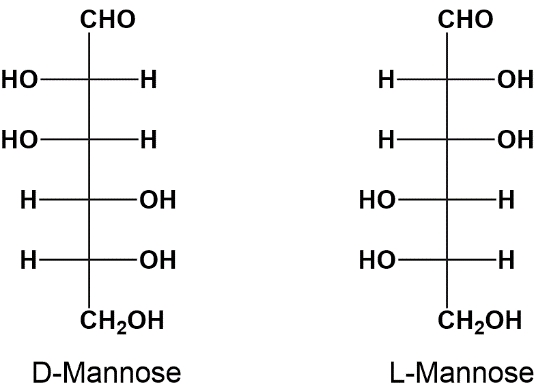In this video, we're going to begin our lesson on monosaccharide stereochemistry. Before we actually get started, I want to point out that most of the information in this topic is actually going to be a review from your old organic chemistry courses. I want you guys to note that, way back in some of our previous lesson videos, we did an organic chemistry review for your biochemistry course. We covered a lot of organic chemistry topics in more detail. If you find a lot of the terminology and vocabulary on this page completely unfamiliar, then be sure to check out those older lesson videos on organic chemistry review before you move on with this video here. Alright, so that being said, let's go on and talk about what we have on this page.
It's important to note that the 3D structures of linear monosaccharides are commonly displayed on pieces of paper using Fischer projections. Throughout our lesson on carbohydrates, we're going to continue to see lots of Fischer projections. Notice over here on the far left, we've got this really cool image to help remind you of an important feature of Fischer projections. All of the horizontal bonds that go from side to side in every Fischer projection are popping out of the page as wedges. Notice we have this three-dimensional sugar molecule and we're shining this flashlight down on the 3D sugar molecule to create this shadow of the sugar molecule on this yellow plane. If we were to draw that shadow onto a piece of paper, we would get the Fischer projection. Notice that the horizontal bonds here in the Fischer projection correspond to bonds that are popping out of the page as wedges. So that's important to keep in mind when we're considering the stereochemistry of Fischer projections.
Now, we can move on to the terms that we have in this table. The first term that we have is 'constitutional isomers.' Recall that isomers are different molecules with the same chemical formula. Constitutional isomers are only going to differ in their constitution, or the connectivity of the atoms. A classic example is glyceraldehyde and dihydroxyacetone (DHA). Notice they have the same chemical formula but different connectivity of atoms. The next term that we have is 'stereo isomers.' These are isomers, so they have the same exact chemical formula. But this time, they don't differ in the connectivity of the atoms. Instead, they differ in their three-dimensional space, which is what the prefix 'stereo' is referring to. Notice that these two molecules only differ in the three-dimensional space of this hydroxyl molecule that we see here.
The next term is 'enantiomers.' Enantiomers are just a specific type of stereo isomer. Recall that they are non-superimposable mirror images. A classic example is our hands. Our left hand is a mirror image of the right hand, and they are non-superimposable since we can't perfectly overlap them in space when facing the same direction. This applies to the molecules here, D-Glyceraldehyde and L-Glyceraldehyde, which are mirror images of one another and cannot be superimposed or overlapped in space.
Lastly, we have 'diastereomers,' which are another type of stereo isomers. Diastereomers are not mirror images. We can see below that these two structures are not mirror images of one another because they differ in their 3D space, the configuration here. That's why we've got this broken mirror to represent the diastereomer.
This concludes our introduction to the stereochemistry of monosaccharides. If you need a review, make sure to go back and check out those older lesson videos. I'll see you in our next video.






